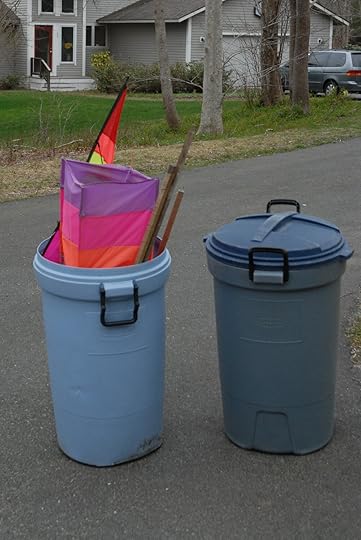Paul H. Raymer's Blog, page 6
September 8, 2020
Wonderful Words
Sometimes a word in a book looks wrong, like a misspelling, like the copy editor made a mistake. And sometimes it is. But there are a huge number of wonderful words in the English language that we rarely run across. Chirk is a word like that.
“He emerged from the water, surged ahead, and caught up to her. Grabbing her, she chirked, emitting a happy high-pitched squeal.”
Chirk means to make a shrill, chirping sound.
Or how about mephitic: “Some of the players were returning to their cars, lugging bags filled with mephitic athletic attire.”
My son played football in high school and when he would climb into the car with that huge bag of sweaty jerseys and socks and the cowboy collar, the air in the car reeked for days even with all the windows open.
Procacious means insolent or arrogant in attitude or tone. “The twin, sloped, two-color taillights procaciously blended into the small tail fins on either side of the curving top of the tiny trunk, barely large enough to hold the spare tire.” This is part of the description of Jon Megquire’s MG Midget.
These are a couple of excerpts from my latest novel, Death At the Edge of the Diamond. Sometimes these words just seem to appear. Sometimes they come from Roget’s Thesaurus - a truly wonderful reference. I haven’t been able to make an electronic thesaurus work half as well.
Sometimes an author is just showing off and doesn’t truly appreciate the words he or she is messing around with. I might have found a simpler word than procacious, for example, but I was trying to evoke the almost sexual attraction of a first car to a new driver.
Sometimes a word is just wrong, misspelled or misused. A good copy editor will pick up most of these minor typos, but good copy editors are expensive and most self-published authors can’t afford them so unfortunately many hurriedly printed books even from reputable publishing houses have typos in them. Personally I think that this is strongly influenced by fast fingering small keyboards and reliance on auto-correct.
Learn more

If you read Death at the Edge of the Diamond carefully you may uncover other interesting words. If you send me what you find, I’ll put you on my list for a free, signed copy of my next book!
— Paul H. Raymer
August 26, 2020
Part 4 - Entering the Self-Publishing Jungle

There’s like to be a Charlie Brown sort of story here!
The next step in the mechanics of the process is typesetting and formatting for ebooks and print books. I tried a variety of approaches for the process. I tried Joel Friedlander’s Book Design Templates which is pretty cool. He’s got a lot of good information and the instructional video on formatting the book is great.
But then you have to go through another step using something like Calibre to convert it into Mobi or Epub, and I could never make that work cleanly.
This time I found Vellum https://vellum.pub/ . This thing is more expensive than most, but it works great. It makes a beautifully formatted book for both print and electronic publishing. It’s not a place to do a lot of editing. You need to be down to your final step for the most part. You need to review it to make sure you have everything in the right places before you pull the trigger, but the final result looks professional.
In my particular genre, I am inundated with information about air quality in homes so I want to say a bit about that here not because it isdirectly related to self-publishing, but because it is directly related to health in homes which is an important issue.
The fact is that we have been forced to spend almost 100% of our time in our homes - and not because we are sitting around binging on TV programs (although that may be happening as well). We are forced to breathe the air in our homes so you better make sure that it as good air as it can be. You might want to check your CO alarm. By the way, CO alarms that are listed by UL 2034 are just that - alarms. If it goes off, get out of the house. Do Not try to defeat it by removing the batteries or waving a dish towel at it. CO is colorless and odorless. Check the date on it. If it is more than 3 years old, you might want to replace it. CO is a killer - the weapon of choice in my novel - Death at the Edge of the Diamond.
There are way too many trees in this neighborhood to fly a kite anyway!
You can add Death at the Edge of the Diamond to your reading list. Check it out and add it to your Goodreads shelf here >>
https://www.goodreads.com/book/show/54473532-death-at-the-edge-of-the-diamond
August 25, 2020
Part 3 - Entering The Self-Publishing Jungle

Chances are good that you’re not going to write your novel with a quill pen, dipping it into a bottle of ink, and scratching the letters on parchment. Most people write on computers these days. So how do you do it?
You can use software such as Microsoft Word or something similar. That’s great software with lots of capabilities that most of us never use. (One thing I have found useful is to use the Style menu and convert titles and subtitles into Heading 1, 2, or 3 and then use the Navigation pane. It will automatically make a list of all those elements and when you are ready for a table of contents, it can automatically do all that for you.)
There is writer’s word processing software, however. Now there may be others, but I have been using Scrivener from Literature and Latte https://www.literatureandlatte.com/ . This thing will do everything a writer might need. It does so many things that it takes a bit to get familiar with it. It does have some good tutorials, however.
When I’m working on my novel, I can go to the Notes section and set up a Diary where I can jot down all my developmental thoughts. There are template sheets for Characters and Settings. You can outline sections and pin them to the virtual cork board and more them around. I can load in images of scenes I am working on and put that in the background and remove everything else so I can just focus on the things I am interested in and don’t get distracted. You can save whole web pages in the reference section and download music to play while you’re working. You can set project targets to keep you pushing forward if you need a bit of a shove.
It has great editing features as well that allow you to split the screen while you’re work, cut things out but keep them available in case you want to put them back, and it goes on and on. I confess that I have trouble remembering all the features of the software that I use if I don’t use it every day. But this thing is worth learning and relearning if necessary.
There is a separate Scapple program that allows me to diagram the plot elements and connect them together.
It’s not expensive - $49 for Scrivener and $18 for Scapple. It was originally just for the Mac OS, but there is a Windows version. I bought that too a few years ago but at that time it was as satisfactory. They may have improved it.
And once your draft is complete, you can compile it and move over to Word if you need to. Then you can start cleaning it up for pre-readers to review.
#deathattheedgeofthediamond
#CapeCodNovel
Have you added Death at the Edge of the Diamond to your reading list yet? Check it out and add it to your Goodreads shelf
https://www.goodreads.com/book/show/54473532-death-at-the-edge-of-the-diamond
August 16, 2020
Part 2 - Entering The Self-publishing Jungle - Editing

So there you are with this pile of electronic pages that you think is pretty good. The next step is to find out if it is any good and to sweep up all the typos, misspellings, mis-punctuations, and all the other detritus that falls out of your brain and onto the page as you squeeze the words out. It is absolutely shocking how many mistakes we make as we write. No matter how many times you go over and over it, these little errors hide in corners and camouflage themselves into what look like what should be there.
Anyway that’s what editors are for. Editors and beta readers. Beta readers are usually friends and family. Couple of things there: you can’t push them if they’re free. Maybe they’ll get to reading it. Maybe they won’t. They have the best intentions, but they do have other lives! Believe it or not your book is not at the top of their to-do list. And that’s certainly fair. Beta readers are also encouraging. At least someone besides you has read the book.
Editors are paid to find all the gotcha’s as well as a lot of other stuff depending on what kind of editor you hire. So that’s like the first professional decision you have to make: Do I need to pay an editor and how much can I afford and will they make it all better? No. They won’t. It’s my book. I’m not perfect, but I should know what I’m doing otherwise I shouldn’t be spending all this time pushing these buttons.
Well not necessarily. When I was in school, and the teacher used his red pen on all my words, and disagreed with my literary analogies, I couldn’t ignore them or he’d fail me. But when I am paying someone, I don’t have to pay attention to their comments. Their observations may very well be right, but they might be wrong. Imagine editing James Joyce’s Finnegan’s Wake or Lawrence Sterne’s Tristram Shandy.
There are a lot of different kinds of editors. The website Elite Authors has some good information on the subject.
Developmental editors delves deeply into the story and can make significant changes.
Line editors pursue the basic writing mechanics and strengthen the higher level elements.
Copy editing editors focus on grammar, spelling and punctuation. The book should be ready for the final launch.
Proofreaders read the final, laid-out PDF.
A good editor has to be able to tell you when something sucks . . . in a nice way . . . in a constructive way that makes you understand it. I have to confess that although I had some great editorial input on Death at the Edge of the Diamond I haven’t found my long-term developmental editor for the next one.
Part 1 - Entering The Self-publishing Jungle

It’s not that hard to write a novel. Frankly it’s a personal struggle between your head and your hands. Control is yours. It’s personal.
Getting the novel published is another thing entirely. I don’t have a printing press in my basement. I don’t have cozy connections with bookstores or Amazon. I have to turn to other people to do that. The question is: who? There are seemingly millions of people and organizations out there eager and willing to take my money and make my dreams come true. It’s like coming out of a tunnel in some fantasy story and being faced with a thousand Gandalfs who all want to take my hand and guide me. If Frodo had stepped out of Brandy Hall and been faced with a thousand Gandalfs, he would have turned around and never come out.
So that’s where I am. I have written what is actually my fifth novel. (In draft form, I call them by their number - “Call it Five” was the working name.) And it has been in the works for five or six years. I self-published “Call it Four” which became Recalculating Truth so you’d think I’d know how to do it again. I have my notes, but things change a lot in five or six years. So it’s like starting over.
The first thing I settled on was writing on my computer. Seems pretty obvious these days. Not may people write with a pot of ink and a quill pen. Many years ago I wrote on an IBM Selectric II typewriter. (Personal computers did not exist in 1972.) I thought I was going to live my life writing so I needed the best tool I could find at the time. I bought the typewriter directly from IBM because there really wasn’t any other way at the time. The salesman at the company was surprised I was going to use it in my NY apartment and insisted on coming to the apartment to set it up! I wondered how hard it was going to be to plug it in and turn it on.
I had a friend also living in New York who wrote on a continuous roll of paper that he fed into his typewriter. He didn’t want to be distracted by changing the pages!
Time passed and technology changed and I went through a bunch of computers from an Apple II to Macs to DOS machines and back to Apple. But that’s a different story. This is a Mac Mini so that’s where I am.
By the way, CallItFive became Death at the Edge of the Diamond and was published in July, 2020.
Salty Air Publishing Blog RSS
July 17, 2020
Part 3 - Entering The Self-Publishing Jungle

Chances are good that you’re not going to write your novel with a quill pen, dipping it into a bottle of ink, and scratching the letters on parchment. Most people write on computers these days. So how do you do it?
You can use software such as Microsoft Word or something similar. That’s great software with lots of capabilities that most of us never use. (One thing I have found useful is to use the Style menu and convert titles and subtitles into Heading 1, 2, or 3 and then use the Navigation pane. It will automatically make a list of all those elements and when you are ready for a table of contents, it can automatically do all that for you.)
There is writer’s word processing software, however. Now there may be others, but I have been using Scrivener from Literature and Latte https://www.literatureandlatte.com/ . This thing will do everything a writer might need. It does so many things that it takes a bit to get familiar with it. It does have some good tutorials, however.
When I’m working on my novel, I can go to the Notes section and set up a Diary where I can jot down all my developmental thoughts. There are template sheets for Characters and Settings. You can outline sections and pin them to the virtual cork board and more them around. I can load in images of scenes I am working on and put that in the background and remove everything else so I can just focus on the things I am interested in and don’t get distracted. You can save whole web pages in the reference section and download music to play while you’re working. You can set project targets to keep you pushing forward if you need a bit of a shove.
It has great editing features as well that allow you to split the screen while you’re work, cut things out but keep them available in case you want to put them back, and it goes on and on. I confess that I have trouble remembering all the features of the software that I use if I don’t use it every day. But this thing is worth learning and relearning if necessary.
There is a separate Scapple program that allows me to diagram the plot elements and connect them together.
It’s not expensive - $49 for Scrivener and $18 for Scapple. It was originally just for the Mac OS, but there is a Windows version. I bought that too a few years ago but at that time it was as satisfactory. They may have improved it.
And once your draft is complete, you can compile it and move over to Word if you need to. Then you can start cleaning it up for pre-readers to review.
#deathattheedgeofthediamond

Connect for Updates
Updates and Upticks
July 7, 2020
Part 2 - Entering The Self-publishing Jungle - Editing
So there you are with this pile of electronic pages that you think is pretty good. The next step is to find out if it is any good and to sweep up all the typos, misspellings, mis-punctuations, and all the other detritus that falls out of your brain and onto the page as you squeeze the words out and onto the page. It is absolutely shocking how many mistakes we make as we write. No matter how many times you go over and over it, these little errors hide in corners and camouflage themselves into what look like what should be there.
Anyway that’s what editors are for. Editors and beta readers. Beta readers are usually friends and family. Couple of things there: you can’t push them if they’re free. Maybe they’ll get to reading it. Maybe they won’t. They have the best intentions, but they do have other lives! Believe it or not your book is not at the top of their to-do list. And that’s certainly fair. Beta readers are also encouraging. At least someone besides you has read the book.
Editors are paid to find all the gotcha’s as well as a lot of other stuff depending on what kind of editor you hire. So that’s like the first professional decision you have to make: Do I need to pay an editor and how much can I afford and will they make it all better? No. They won’t. It’s my book. I’m not perfect, but I should know what I’m doing otherwise I shouldn’t be spending all this time pushing these buttons.
Well not necessarily. When I was in school, and the teacher used his red pen on all my words, and disagreed with my literary analogies, I couldn’t ignore them or he’d fail me. But when I am paying someone, I don’t have to pay attention to their comments. Their observations may very well be right, but they might be wrong. Imagine editing James Joyce’s Finnegan’s Wake or Lawrence Sterne’s Tristram Shandy.
There are a lot of different kinds of editors. The website Elite Authors has some good information on the subject.
Developmental editors delves deeply into the story and can make significant changes.
Line editors pursue the basic writing mechanics and strengthen the higher level elements.
Copy editing editors focus on grammar, spelling and punctuation. The book should be ready for the final launch.
Proofreaders read the final, laid-out PDF.
A good editor has to be able to tell you when something sucks . . . in a nice way . . . in a constructive way that makes you understand it. I have to confess that although I had some great editorial input on Death at the Edge of the Diamond I haven’t found my long-term developmental editor for the next one.
Entering The Self-publishing Jungle - Part 2 - Editing
So there you are with this pile of electronic pages that you think is pretty good. The next step is to find out if it is any good and to sweep up all the typos, misspellings, mis-punctuations, and all the other detritus that falls out of your brain and onto the page as you squeeze the words out and onto the page. It is absolutely shocking how many mistakes we make as we write. No matter how many times you go over and over it, these little errors hide in corners and camouflage themselves into what look like what should be there.
Anyway that’s what editors are for. Editors and beta readers. Beta readers are usually friends and family. Couple of things there: you can’t push them if they’re free. Maybe they’ll get to reading it. Maybe they won’t. They have the best intentions, but they do have other lives! Believe it or not your book is not at the top of their to-do list. And that’s certainly fair. Beta readers are also encouraging. At least someone besides you has read the book.
Editors are paid to find all the gotcha’s as well as a lot of other stuff depending on what kind of editor you hire. So that’s like the first professional decision you have to make: Do I need to pay an editor and how much can I afford and will they make it all better? No. They won’t. It’s my book. I’m not perfect, but I should know what I’m doing otherwise I shouldn’t be spending all this time pushing these buttons.
Well not necessarily. When I was in school, and the teacher used his red pen on all my words, and disagreed with my literary analogies, I couldn’t ignore them or he’d fail me. But when I am paying someone, I don’t have to pay attention to their comments. Their observations may very well be right, but they might be wrong. Imagine editing James Joyce’s Finnegan’s Wake or Lawrence Sterne’s Tristram Shandy.
There are a lot of different kinds of editors. The website Elite Authors has some good information on the subject.
Developmental editors delves deeply into the story and can make significant changes.
Line editors pursue the basic writing mechanics and strengthen the higher level elements.
Copy editing editors focus on grammar, spelling and punctuation. The book should be ready for the final launch.
Proofreaders read the final, laid-out PDF.
A good editor has to be able to tell you when something sucks . . . in a nice way . . . in a constructive way that makes you understand it. I have to confess that although I had some great editorial input on Death at the Edge of the Diamond I haven’t found my long-term developmental editor for the next one.
March 12, 2020
Part 1 - Entering The Self-publishing Jungle

It’s not that hard to write a novel. Frankly it’s a personal struggle between your head and your hands. Control is yours. It’s personal.
Getting the novel published is another thing entirely. I don’t have a printing press in my basement. I don’t have cozy connections with bookstores or Amazon. I have to turn to other people to do that. The question is: who? There are seemingly millions of people and organizations out there eager and willing to take my money and make my dreams come true. It’s like coming out of a tunnel in some fantasy story and being faced with a thousand Gandalfs who all want to take my hand and guide me. If Frodo had stepped out of Brandy Hall and been faced with a thousand Gandalfs, he would have turned around and never come out.
So that’s where I am. I have written what is actually my fifth novel. (In draft form, I call them by their number - “Call it Five” was the working name.) And it has been in the works for five or six years. I self-published “Call it Four” which became Recalculating Truth so you’d think I’d know how to do it again. I have my notes, but things change a lot in five or six years. So it’s like starting over.
The first thing I settled on was writing on my computer. Seems pretty obvious these days. Not may people write with a pot of ink and a quill pen. Many years ago I wrote on an IBM Selectric II typewriter. (Personal computers did not exist in 1972.) I thought I was going to live my life writing so I needed the best tool I could find at the time. I bought the typewriter directly from IBM because there really wasn’t any other way at the time. The salesman at the company was surprised I was going to use it in my NY apartment and insisted on coming to the apartment to set it up! I wondered how hard it was going to be to plug it in and turn it on.
I had a friend also living in New York who wrote on a continuous roll of paper that he fed into his typewriter. He didn’t want to be distracted by changing the pages!
Time passed and technology changed and I went through a bunch of computers from an Apple II to Macs to DOS machines and back to Apple. But that’s a different story. This is a Mac Mini so that’s where I am.
I am going to break this up into chunks.
Entering The Self-publishing Jungle - Part 1

It’s not that hard to write a novel. Frankly it’s a personal struggle between your head and your hands. Control is yours. It’s personal.
Getting the novel published is another thing entirely. I don’t have a printing press in my basement. I don’t have cozy connections with bookstores or Amazon. I have to turn to other people to do that. The question is: who? There are seemingly millions of people and organizations out there eager and willing to take my money and make my dreams come true. It’s like coming out of a tunnel in some fantasy story and being faced with a thousand Gandalfs who all want to take my hand and guide me. If Frodo had stepped out of Brandy Hall and been faced with a thousand Gandalfs, he would have turned around and never come out.
So that’s where I am. I have written what is actually my fifth novel. (In draft form, I call them by their number - “Call it Five” was the working name.) And it has been in the works for five or six years. I self-published “Call it Four” which became Recalculating Truth so you’d think I’d know how to do it again. I have my notes, but things change a lot in five or six years. So it’s like starting over.
The first thing I settled on was writing on my computer. Seems pretty obvious these days. Not may people write with a pot of ink and a quill pen. Many years ago I wrote on an IBM Selectric II typewriter. (Personal computers did not exist in 1972.) I thought I was going to live my life writing so I needed the best tool I could find at the time. I bought the typewriter directly from IBM because there really wasn’t any other way at the time. The salesman at the company was surprised I was going to use it in my NY apartment and insisted on coming to the apartment to set it up! I wondered how hard it was going to be to plug it in and turn it on.
I had a friend also living in New York who wrote on a continuous roll of paper that he fed into his typewriter. He didn’t want to be distracted by changing the pages!
Time passed and technology changed and I went through a bunch of computers from an Apple II to Macs to DOS machines and back to Apple. But that’s a different story. This is a Mac Mini so that’s where I am.
I am going to break this up into chunks.



